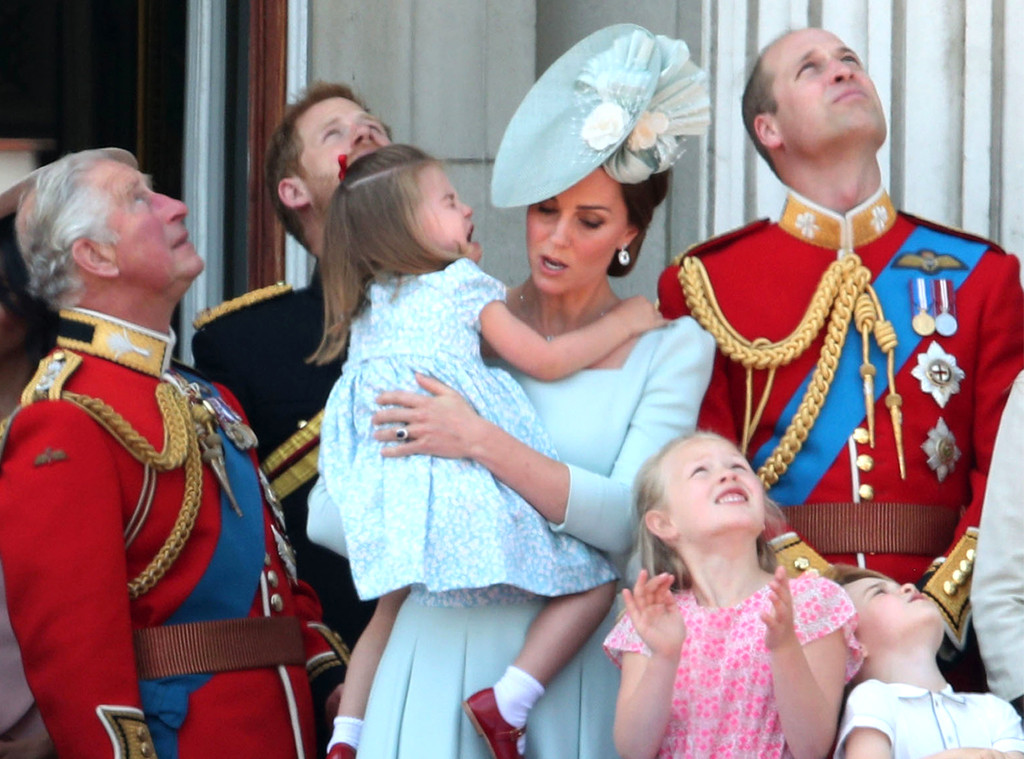In a move that has sent tremors through the corridors of Buckingham Palace and stirred debate across Britain and the Commonwealth, King Charles III has enacted one of the most dramatic royal restructurings in decades. Before an audience of senior courtiers, military aides, and members of the Household, His Majesty bestowed two unprecedented titles upon Princess Catherine and Princess Charlotte — a gesture that royal historians say will be studied for generations.
It was not just a ceremonial adjustment. It was a message.
And it has rewritten the trajectory of the modern monarchy.
A Ceremony That Stunned Even the Insiders
Those who were present described the atmosphere as “charged,” even before the King entered the gilded State Room at Buckingham Palace. Rumors had circulated for days that a significant announcement was coming — yet no one anticipated its magnitude.
When King Charles spoke, his voice was calm, measured, but unmistakably resolute.
Princess Catherine, the Princess of Wales, would receive the newly created title of
“Princess Royal Consort” —
a role traditionally tied to the spouse of a reigning monarch, granted years or even decades later.
Moments later, the King continued:
Princess Charlotte, his ten-year-old granddaughter, would be appointed
“Duchess of Edinburgh” —
reviving a title with deep historical weight and connecting it directly to the next generation of heirs.
Gasps, witnesses say, rippled across the room.
The monarchy had shifted — not slowly, but in one sweeping gesture.
Why These Titles Matter More Than Symbolism
For Princess Catherine
Her new title elevates her status far beyond traditional consort duties. It positions her as a political, diplomatic, and public cornerstone of the Crown
long before William ascends the throne.
A senior royal adviser explained:
“This is the King’s acknowledgment that Catherine is not merely supportive — she is foundational. She is the heart of the modern monarchy.”
For years, Catherine has navigated the pressures of public life with grace, emotional intelligence, and steadfast service. In granting her this title so early, Charles signaled that she will stand beside William not just as a wife, but as a true partner in leadership — the future Queen already taking on Queenly responsibilities.
For Princess Charlotte
The decision to name Charlotte the Duchess of Edinburgh is nothing short of revolutionary. Traditionally, the title has belonged to male heirs — including the late Prince Philip and later Prince Edward.
By giving it to a young girl, the King has quietly but unmistakably advanced gender equality inside the royal hierarchy.
Dr. Eliza Fortescue, a leading royal historian, noted:
“This is a turning point. A daughter is no longer second to a son simply because of gender. Charlotte is being positioned as one of the central pillars of the monarchy’s next era.”
At just ten years old, Charlotte becomes the youngest duchess in modern British history.
A Moment of Emotion No One Expected
While the King’s announcement was bold, it was the reaction of the mother and daughter that captured hearts worldwide.
When Catherine heard her title spoken aloud, witnesses say her eyes filled with tears — a mixture of gratitude, humility, and perhaps the quiet weight of responsibility.
But the room shifted again when Princess Charlotte stepped forward, curtsied, and said a single sentence to her grandfather.
Witnesses describe the King as momentarily speechless.
Though the Palace has not released Charlotte’s words, one attendee revealed they were “deeply respectful, deeply mature, and deeply Diana.”
The comparison, insiders say, was unavoidable.
The grace.
The poise.
The sense of duty at such a young age.
A generation remembering the grandmother she never met.
A Tribute to Diana — Or a New Royal Direction?
Royal watchers across the UK have debated whether this decision was Charles’s subtle nod to Princess Diana — the woman whose legacy still shapes the monarchy — or whether it marks the beginning of a carefully designed structural shift.
Some believe the timing is deliberate.
Catherine and Charlotte have become the two most beloved female figures of the younger generation. Their warmth, empathy, and connection with the public mirror Diana’s spirit in a way few others have managed.
By elevating them now, Charles seems to be signaling:
“This is the future — and the future is in steady hands.”
The King’s Strategy: Streamlining the Monarchy
Since his accession, King Charles has focused on shaping a smaller, more efficient royal family. For years, he has faced public scrutiny over the relevancy of the monarchy, the cost of its upkeep, and the controversies of past scandals.
His decision to elevate Catherine and Charlotte accomplishes three things at once:
-
Strengthens the direct line of succession
-
Restores confidence by highlighting trusted, popular figures
-
Reconnects the monarchy with the values the late Queen Elizabeth II championed: duty, modesty, and service
This is more than ceremony.
It is architecture.
Public Reaction: A Wave of Support
Within minutes of the announcement, social media erupted:
-
“Catherine is the true heart of the monarchy — this title is perfect
.”
-
“Charlotte becoming Duchess of Edinburgh at ten? This is the modern monarchy we needed.”
-
“Diana would be so proud.”
Hashtags like #PrincessRoyalConsort, #DuchessCharlotte, and
#RoyalEra trended globally.
For many older readers — especially those who witnessed Diana’s rise — this moment felt symbolic. Healing. Forward-looking.
A Royal Portrait for the Ages
In the coming weeks, the Palace is expected to release the first official portraits of Princess Catherine as Princess Royal Consort and Princess Charlotte as Duchess of Edinburgh.
A mother and daughter standing together, representing continuity, compassion, and courage — qualities the monarchy desperately needs.
A new era has begun.
And in the quiet dignity of Catherine and the youthful confidence of Charlotte, Britain may have found something it hasn’t felt in years:
The Queen’s Quiet Fears: The Hidden Vulnerabilities Behind Elizabeth II’s Unshakable Reign









